How to Create Cool Custom Case Mods
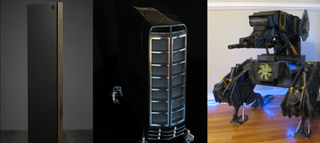
Modding tips from the masters
A truly custom computer case is a work of art (See our awesome reader submitted rigs here for more proof). It is a one-of-a-kind unique statement that stands out among mass-market boxes, and pushes the aesthetic of the creative ‘case mod’ (adapting an existing case with paint and trim) to the edge.
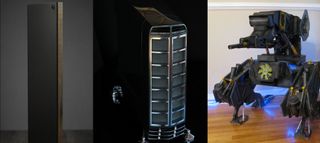
Most importantly, a custom case can be as different as its builder desires. Take the Cor Leonis built by Attila Lukas: Its sleek lines and polished grills are more sports car than computer case. The uber-thin Tenius2 case by Peter Husar is again quite different: Its tall finished wood and black metal shell looks more like a top-end Bang & Olufsen audio component, rather than a PC.
Blowing them both out of the water – at least when it comes to radical design -- is Mohamed Metwally’s Project Performer. With its flexed metal robotic legs, hydraulic rams and swivelling machine gun, Metwally’s Project Performer looks like a weapons droid from some futuristic war videogame.
Despite the substantial differences between all of these custom cases, they all share some qualities in common. First, each case was built within the limits of each builder’s skills and available tools. Second, each one houses a functioning PC with sufficient room for all components and cooling; plus ways to easily access the controls and I/O jacks as needed. Third, each of these custom cases highlights the particular taste of each builder, and expresses it in a way that demands attention. Here’s how they did it.
Project Performer
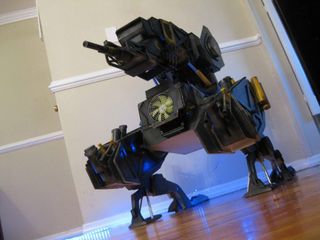
We start with Mohamed Metwally’s Project Performer; a case whose shape was inspired by “a pic I saw on the Internet,” he says. Known as “Momed,” Metwally is an accomplished case modder who has won numerous awards (you can see his various creations at www.ModsCases.com ). Motwally started by using the onscreen image to work up a design on paper. He then made the central part of the design large enough to accommodate the guts of a high-powered PC, and scaled all of his other parts from there.
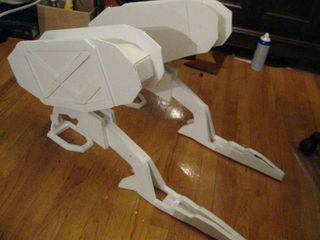
Despite its apparently complex metal design, Project Performer’s case is actually made from lightweight foamboard. This is a readily available, easy-to-cut material that Matwally was able to fashion into all the parts he needed. He just worked out the design on paper, then cut the foamboard to match his drawings.
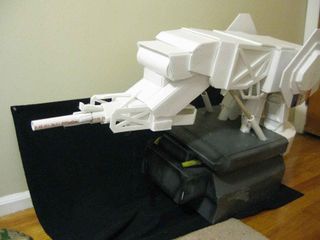
“I used ½-inch foamboard for the legs, and put it together with hot glue, with strips of wood added for support” he says. This created legs that were stout enough to hold Project Performer up. The rest of the case uses slightly thick 3/16" foamboard, cut into whatever shapes suited Matwally’s design.
PC Gamer Newsletter
Sign up to get the best content of the week, and great gaming deals, as picked by the editors.
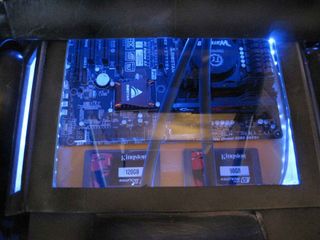
The CPU and all other components are housed with Project Performer’s central case, which measures 14x13x5-inches. “I cut the front of the case and added three clear acrylic pieces for showing the hardware inside,” Matwally says. It contains an Intel Core i7 2600K processor, 4GB of G.Skill RAM and two Kingston SSDs. The cooling is achieved using a ThermalTake Water 3.0 Pro Water/Liquid CPU Cooler.

The upper section was built from foamboard and eight pieces of PVC pipe cut into 7-inch lengths to form the hydraulic rams; again held together by hot glue. Once assembled, Matwally painted Project Performer with gray spray paint, and used an airbrush with black paint to texturize and bring out the details of his 3D design. He added plastic bullets in the units’ side-mounted ‘carrying pockets’, and his case was done.
Click the next page to read about the Tenius2.
Alan has been writing about PC tech since before 3D graphics cards existed, and still vividly recalls having to fight with MS-DOS just to get games to load. He fondly remembers the killer combo of a Matrox Millenium and 3dfx Voodoo, and seeing Lara Croft in 3D for the first time. He's very glad hardware has advanced as much as it has though, and is particularly happy when putting the latest M.2 NVMe SSDs, AMD processors, and laptops through their paces. He has a long-lasting Magic: The Gathering obsession but limits this to MTG Arena these days.
Most Popular








